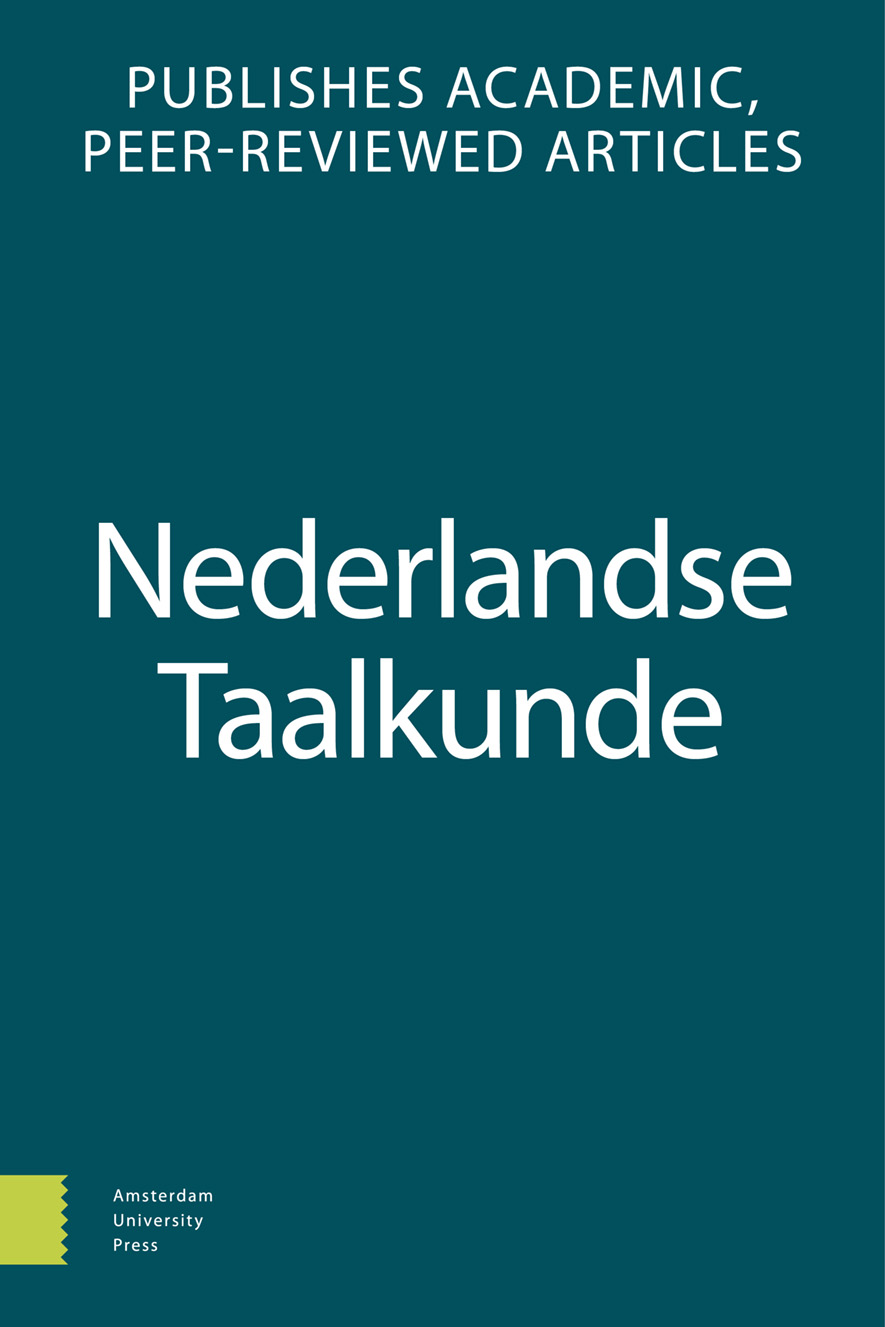- Home
- A-Z Publications
- Nederlandse Taalkunde
- Previous Issues
- Volume 23, Issue 2, 2018
Nederlandse Taalkunde - Volume 23, Issue 2, 2018
Volume 23, Issue 2, 2018
Language:
English
-
-
De vijf pilaren van de fonologie
More LessAbstract This paper discusses how the phonologies of Dutch, West-Frisian and Afrikaans are represented in Taalportaal, a digital grammar of the three West-Germanic languages. These languages have similar consonant inventories, but differ in the vowel phonemes that they use. The phonological processes and phonotactic restrictions that refer to laryngeal properties are comparable in the three languages, but for ot Read More
-
-
-
Het Nederlandse fonologiegedeelte van Taalportaal
More LessBy Dick SmakmanAbstract The Taalportaal website is a highly accessible webpage for those interested in Dutch, Afrikaans, and Frisian. The Dutch phonology part can be used by both researchers and teachers. Both groups, however, might be confused by certain transcription conventions, because underlying principles are not explained. Language variation and social connotations also deserve more attention. In general, explanations might be Read More
-
-
-
De fonologie van het Nederlands in Taalportaal
More LessAuthors: Ellen Simon & Anne-Sophie GhyselenAbstract In this paper we review the phonological component of Dutch in Taalportaal, a website discussing the language systems of Dutch, Frisian and Afrikaans. We examine the website from the perspective of language variation, with special attention to (varieties of) Belgian Dutch. The discussion on Dutch phonology is comprehensive, including segmental as well as suprasegmental topics. Language variation is certainly Read More
-
-
-
Morfologie in het Taalportaal
More LessAuthors: Arne Dhondt & Johan De CaluweAbstract This paper evaluates the morphological part of the Taalportaal website, which gives access to a comprehensive, scientific grammar of Dutch, Frisian and Afrikaans. More particularly, we investigate how separable verbs are dealt with in Taalportaal. We evaluate the structure of that part of the website, and try to find an answer to three questions regarding this type of verbs, viz. (i) what are separable verbs, (ii) what i Read More
-
-
-
De morfologie van het Taalportaal
More LessAuthors: Jan Don & Fred WeermanAbstract In this article we investigate what the Taalportaal has to offer concerning Dutch word formation. We note that the Taalportaal is not yet able to provide a large group of users with relevant information in an accessible manner. This is partly due to the fact that the Taalportaal has not yet been made suitable for the Internet, for another part the grammatical information makes ample use of scientific jargon so that it is Read More
-
-
-
Nieuwe geschiedenis
More LessAbstract P.J. Meertens’ appointment in 1930 as secretary of the Dialect Committee and head of its bureau has been described as a key step in his unfolding career as a folklorist. Whereas histories of the study of folklore are plentiful, those on the Dialect Committee and its bureau are scant. J. Daan’s history of dialect geography in the Netherlands includes misrepresentations and omissions involving Meertens, van Ginneken and Read More
-
-
-
Facking nice!
More LessAbstract High degree adverbs, or so-called intensifiers, constitute a large and apparently ever growing set of words in Dutch, even to the degree that each generation appears to recruit their own set of them. We address the question of what exactly determines the strength of an intensifier by investigating which factors influence their (perceived) strength. The results of an experiment among over 300 high school students show Read More
-
Most Read This Month
Article
content/journals/13845845
Journal
10
5
false
en

Most Cited Most Cited RSS feed
-
-
Goed of fout
Authors: Hans Bennis & Frans Hinskens
-
- More Less

